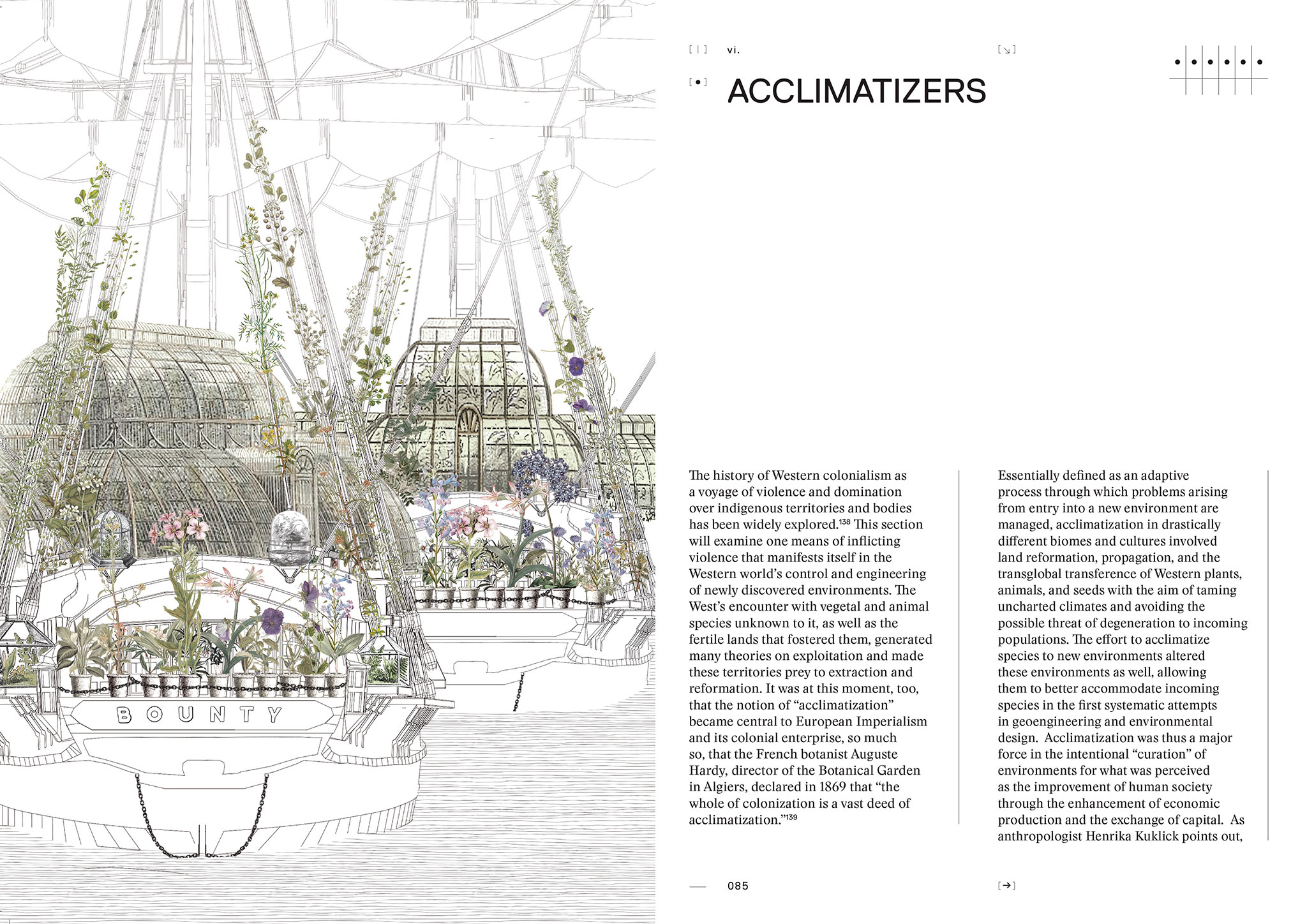"Histories of Ecological Design: An Unfinished Cyclopedia" begins with a preface and an introduction that explains the meaning of the word ecology, as a link between living organisms and the environment in which they live, and of the term "ecological project. The first section, entitled Naturalism, explains the meaning of the word ecology, as a link between living organisms and the environment in which they live, and of the term "ecological project", as any form of project that reduces environmental impact and is integrated into the life processes of the place, understanding that any projected product or space has a great impact and presence in the world.
The first major block, called Naturalism, covers the period from the end of the 19th century to the end of the Second World War. Described as a search for roots, it covers the beginnings of documentation and interest in the natural world, trees and plants, and the exploration of wild and untamed fields. It was during this period that the idea of an ecological project was born, with various maps illustrating and speculating on the order and roots of the natural world.

Interior pages. Histories of Ecological Design: An Unfinished Cyclopedia by Lydia Kallipoliti.
The second block, Synthetic Naturalism, runs from the end of the 19th century to the 2000s. Tentatively called the "system period", it refers to the ecological project as the planned redistribution of global resources, due to the paradigm shift after the Second World War. World War. In the era of the environmentalists, the increase in pollution, the growth of cities, the decline in economic growth and the excessive flow of waste, a current of "artificial ecology" was generated, which copied the functions of nature with analogous systems created by man.
The third and final part, called Dark Naturalism, from the 2000s to the present day, is called the Anthropocene. A new geological era in which the human footprint has reshaped the geophysical properties of the planet, resulting in global climate change. In this new era, art and architecture seek to return to the original period of wild and undominated nature. To do this, they are using cloud computing, where all information is stored and every problem can be systematically deciphered. In this sense, the ecological project is understood as a system in which the parts are as real as the system itself.
The first major block, called Naturalism, covers the period from the end of the 19th century to the end of the Second World War. Described as a search for roots, it covers the beginnings of documentation and interest in the natural world, trees and plants, and the exploration of wild and untamed fields. It was during this period that the idea of an ecological project was born, with various maps illustrating and speculating on the order and roots of the natural world.

Interior pages. Histories of Ecological Design: An Unfinished Cyclopedia by Lydia Kallipoliti.
The second block, Synthetic Naturalism, runs from the end of the 19th century to the 2000s. Tentatively called the "system period", it refers to the ecological project as the planned redistribution of global resources, due to the paradigm shift after the Second World War. World War. In the era of the environmentalists, the increase in pollution, the growth of cities, the decline in economic growth and the excessive flow of waste, a current of "artificial ecology" was generated, which copied the functions of nature with analogous systems created by man.
The third and final part, called Dark Naturalism, from the 2000s to the present day, is called the Anthropocene. A new geological era in which the human footprint has reshaped the geophysical properties of the planet, resulting in global climate change. In this new era, art and architecture seek to return to the original period of wild and undominated nature. To do this, they are using cloud computing, where all information is stored and every problem can be systematically deciphered. In this sense, the ecological project is understood as a system in which the parts are as real as the system itself.

























